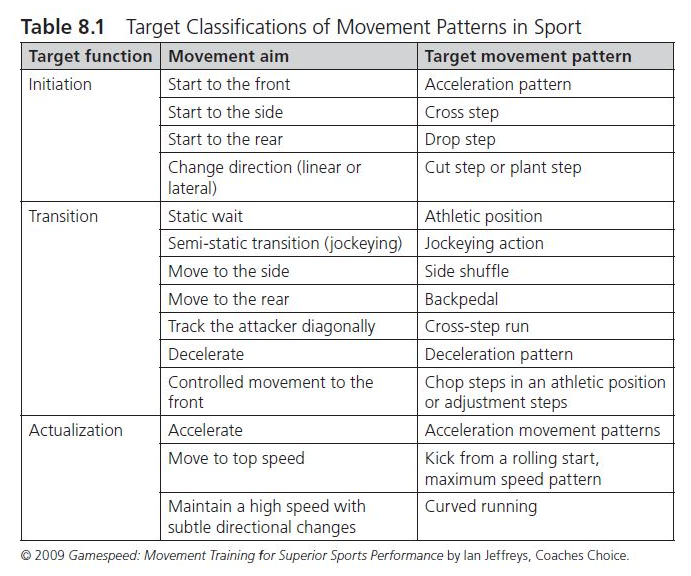Classifying Movements
by Developing Agility and Quickness
Kinetic Select
January 2022
This brief excerpt breaks down agility into different target movement patterns to help develop an effective agility and quickness program.
The following is an exclusive excerpt from the book Developing Agility and Quickness, Second Edition, published by Human Kinetics. All text and images provided by Human Kinetics.
An effective educational process identifies the basic skills required to master the subject. Similarly, an effective agility and quickness program should be based on identifying the basic movement patterns that are required to perform the sport-related tasks encountered in a game (3, 4, 6). Given the variety of sports and the range of tasks performed within these sports, identifying basic skills can be a challenge. Through reverse engineering, however, several generic requirements become clear, such as the ability to start motion, to accelerate rapidly, to decelerate to perform a skill, and to change direction to create space (6). These requirements can, in turn, be broken down into discrete movement patterns that, if mastered, can form the basis of effective agility performance in a wide range of sports (see table 8.1). While some differences will exist between sports, targeted movement patterns provide an appropriate structure around which to develop an effective agility and quickness program.
At the heart of the target classifications are the target functions, which aim to determine what athletes are trying to achieve (3, 6). At any given time, athletes are likely to be attempting either to start movement or to change the direction of movement (termed initiation movements), trying to move at maximal velocity (actualization movements), or waiting in transition to anticipate, react, or manipulate themselves in relation to a sport-specific stimulus (transition movements). Although agility training often focuses on initiation and actualization movements, far less emphasis is placed on transition movements. Often when these are trained they are taught incorrectly, with the emphasis on movement speed rather than on control. Athletes’ ability to start and move at maximal velocity often depends on being in the correct position to enable effective subsequent movement.
Table 8.1 identifies the movement aims and the associated target movement patterns within each target function (initiation, transition, and actualization) that collectively develop a movement syllabus (6). This forms the basis of the development program, with these movement patterns established, then refined, and then progressively applied in increasingly sport-specific scenarios. When combined with the application of effective skill-based practices, the movement syllabus creates a very powerful system around which to develop an effective agility and quickness program.

In Developing Agility and Quickness, leading experts from the National Strength and Conditioning Association (NSCA) offer more than 130 drills, 12 agility and quickness tests, and 15 sport-specific training plans to help athletes gain a step on the competition. The book is available in bookstores everywhere, as well as online at the NSCA Store.
- Privacy Policy
- Your Privacy Choices
- Terms of Use
- Retraction and Correction Policy
- © 2025 National Strength and Conditioning Association